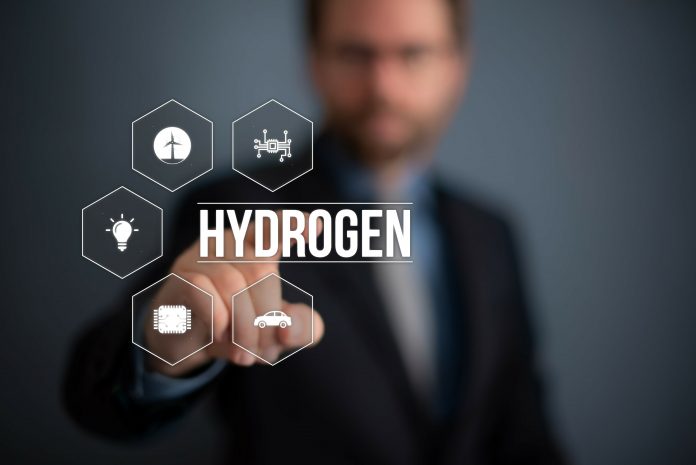
Dominion Energy Inc. and Sempra Energy are two of at least a dozen domestic energy companies looking to the future as lower-carbon fuels are seemingly finding traction within the global market. Attempting to utilize existing infrastructure, fossil fuel entities have begun producing hydrogen and testing its feasibility within natural gas pipelines.
With 2050 being the target year for net-zero carbon emissions, nations around the world are looking at technological advancements to accomplish this goal. Hydrogen has been placed on the pedestal as the saving grace, but it still remains in developmental stages. If successful transport can be accomplished through existing pipelines and established power plants can be converted, a serious advantage can be had by energy companies in revitalizing existing infrastructure.
With the possible route to hydrogen comes various hurdles along the way. Although some energy companies are attempting to embrace the change, others will require encouragement layed out through regulation and legislation. Before fossil fuels could ever be abandoned, energy moguls would have to pay out billions of dollars to reduce green-hydrogen production costs.
While hydrogen experimentation currently resides in the early stages, Enbridge Inc. of Canada is blending nearly two percent hydrogen into natural gas pipelines in Ontario. Additionally, the company will soon begin the same process in Quebec.
“We are looking to understand the potential either with the existing system or, as we’re continuing to modernize the gas pipeline system, to ensure that new construction is hydrogen-ready,” said Enbridge’s Chief Sustainability Officer, Pete Sheffield.
Studying the effects on pipelines, appliances, and additional equipment, Sempra’s Southern California Gas is mixing hydrogen with natural gas and sending it down the pipes. The company currently provides natural gas to 22 million consumers.
According to Southern California Gas’ Chief Environmental Officer, Jawaad Malik, the company’s initial project involves blending hydrogen in a mostly residential area. This allows the company to isolate the test project from the remainder of the distribution system.
Aaron Ruby, spokesperson for Dominion Energy, indicated the Virginia-based firm is running tests on a five percent hydrogen blend in a Utah training facility. They have also proposed another pilot program in North Carolina that mirrors the same characteristics as the Utah project.
With comparisons made between green hydrogen and blue hydrogen, the production of the gas is only considered clean if produced through methods of low or zero-carbon emitting results. This includes energy sources such as biomass, nuclear, renewable or fossil fuels combined with carbon-capture technology.
“These types of proposals have not yet shown a path to a deeply decarbonized gas system,” said Julie McNamara, Union of Concerned Scientists Senior Energy Analyst.
Supporting hydrogen’s potential, Jeff Goldmeer, General Electric Emergent Technologies Director for Decarbonization, states that nearly all gas turbines used to produce power have the capability to burn fuels made up of approximately five to ten percent hydrogen. This would enable a reduction of carbon dioxide emissions from the power sector’s natural gas consumption. This factor proves astonishing as the International Energy Agency (IEA) reports that approximately 36 percent of energy-related carbon emissions are produced from electricity generation fired by fossil fuels.
Increasing Pilot Program Numbers
While pilot programs are becoming increasingly more popular, global hydrogen use must expand by more than 200 billion tonnes in 2030 to achieve the 2050 net-zero emissions goal. As of now, that goal comes with a high degree of difficulty as both hydrogen production and transport stickers at a higher price compared to natural gas. Evercore ISI analysts, however, recently released a report indicating green hydrogen could potentially gain cost competitiveness in 2030 with a decreased quantity of clean versions.
General Electric has also jumped on the hydrogen bandwagon with more than 450 terawatt-hours (TWh) of power provided by upwards of 75 turbines globally that both use and have used hydrogen-containing fuel.
“Clean hydrogen will be constrained in supply for the foreseeable future,” said McNamara. “Blending it at a low level into a gas pipeline that should be transitioned to electrification is just not the right pathway to be taken today.”
While pilot programs attempt to find a happy medium, carbon emission proponents say it is clear that technology will need to further advance for hydrogen to be burned as a replacement and viable fuel as opposed to being added as a small percentage to a natural gas blend. The standard set for 2050 will require additional enhancements and greater commitments if net-zero emission goals are to be met.
Nick Vaccaro is a freelance writer and photographer. Besides providing technical writing services, he is an HSE consultant in the oil and gas industry with eight years of experience. He also contributes to Louisiana Sportsman Magazine and follows and photographs American Kennel Club field and herding trials. Nick has a BA in Photojournalism from Loyola University and resides in the New Orleans area. 210-240-7188 [email protected]














